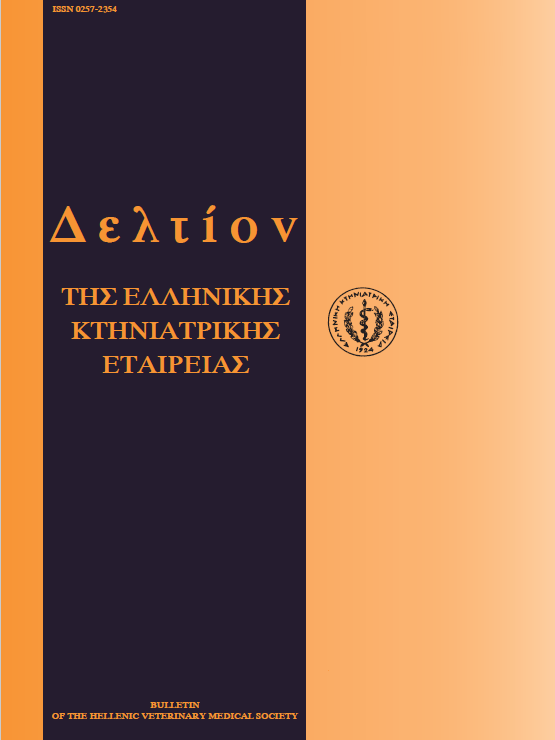Feline ringworm. Interference with the epidemiology of Microsporum canis
Аннотация
The presence of dermatophytes in animals with skin lesions (ringworm), as well as in animals with apparently healthy skin (healthy carriers) was studied. Skin scales and infected hair from 125 cats with skin lesions were examined microscopically by using 20% KOH and the methylene blue stain. Specimens were also inoculated in Sabouraud-chloramphenicol-cycloheximide agar. The hairbrush technique was performed in 200 cats with apparently healthy skin (120 of the urban and 80 of the rural area). Dermatophytes were isolated from 92 cats with skin lesions. M. canis was isolated from the 97,8% and T. mentagrophytes from 2,2% of the infected cats. Most of the infected animals (63) were up to 24 months old but the proportion between infected males and females cats was approximately equal. From the 120 cats of the urban area and the 80 cats of the rural area ( both groups included as apparently healthy cats) 40 (33,3%) and 15(18,7%) were found carrying dermatophytes, respectively. M. canis was exclusively isolated from the cats of the urban area ίη 70% while T. mentagrophytes in 15% and M. gypseum in 12,5%. The most frequent dermatophyte isolated from the apparently healthy cats of the rural area was M. gypseum (53,3%), while T. mentagrophytes (33,3%) and T. terrestre were the second and the third isolated. It is mentioned that infected cats and especially apparently healthy cats but carriers of M. canis, interfere with public health because of the possibility of transmission to human and given that numerous cases of children and of the animal owners have been affected.
Article Details
- Как цитировать
-
BOURDZI-HATZOPOULOU (ΜΠΟΥΡΤΖΗ-ΧΑΤΖΟΠΟΥΛΟΥ Ε.) E. (2018). Feline ringworm. Interference with the epidemiology of Microsporum canis. Journal of the Hellenic Veterinary Medical Society, 49(1), 66–70. https://doi.org/10.12681/jhvms.15749
- Выпуск
- Том 49 № 1 (1998)
- Раздел
- Research Articles

Это произведение доступно по лицензии Creative Commons «Attribution-NonCommercial» («Атрибуция — Некоммерческое использование») 4.0 Всемирная.
Authors who publish with this journal agree to the following terms:
· Authors retain copyright and grant the journal right of first publication with the work simultaneously licensed under a Creative Commons Attribution Non-Commercial License that allows others to share the work with an acknowledgement of the work's authorship and initial publication in this journal.
· Authors are able to enter into separate, additional contractual arrangements for the non-exclusive distribution of the journal's published version of the work (e.g. post it to an institutional repository or publish it in a book), with an acknowledgement of its initial publication in this journal.
· Authors are permitted and encouraged to post their work online (preferably in institutional repositories or on their website) prior to and during the submission process, as it can lead to productive exchanges, as well as earlier and greater citation of published work.




